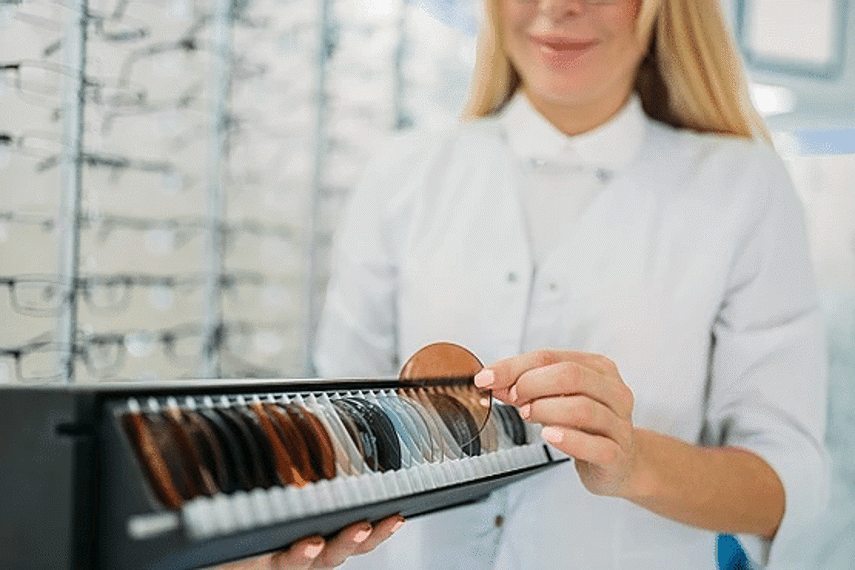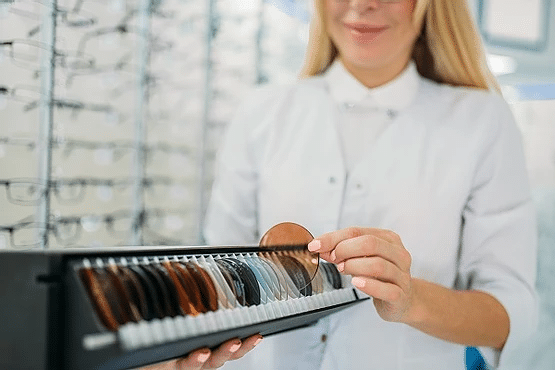There are three main types of lenses for glasses available on the market today. These include:
1. Single vision
Single vision lenses can be for distance, reading or intermediate. These are used mainly by younger people or anyone with presbiopia who prefers two separate pairs of glasses.
2. Bifocal lenses
Bifocals are mostly distance or intermediate with a segment of near or intermediate which is located at the bottom of the lens. This is aimed for people with presbiopia who are either non-tolerant or don’t like varifocals but still prefer to use just one pair. Or people with dementia or have had a stroke who struggle to use varifocals.
An executive lens is a lens that is very much like the bifocal, except the reading or intermediate segment runs right along the whole lens rather than a portion of the bottom of the lens. This gives the wearer 50% distance vision and 50% near or intermediate vision at the bottom. This lens is ideal for office workers who tend to glance to the side so they can still see through their reading or intermediate area without interruption.
3. Varifocal lenses
Varifocal lenses are for people with presbiopia who prefer just having one single pair of glasses. This lens contains the distance at the top, intermediate in the middle and reading area at the bottom of the lens. There are no markings or anything on the lens to show cosmetically that they are varifocal lenses which appeals to most people. The downside to this lens is that there are areas of distortion at either side of the lens so it’s important to position yourself to be able see clearly. This positioning becomes natural to you after a week or so. There are many different types of varifocal available today, the better the varifocal, the wider the reading and intermediate area, therefore the smaller the area of distortion.

There are also three main types of lens coatings
There are various coatings available for your lenses. There’s a hardcoat which is a scratch resistant coating to keep any fine scuffs or scratches at bay. This is a good option for people who wear two different pairs or take their glasses on and off regularly.
1. AR coating
An AR coating is an anti reflective coating which helps artificial light to pass through the lens rather than bouncing off the lens and causing lots of reflection, usually used for someone who drives at night time for seeing car headlamps and street lamps. Or for those who regularly use computer screens, ipads or any other electronic device which gives off artificial light.
2. MAR coating
An MAR coating is a multi anti-reflective coating, as well as having the anti-reflective coating it also incorporates the scratch resistant coating as stated above.
3. Blue control coating
A blue control coating reduces the blue light emitted by digital screens, minimising glare and enhancing contrast. This lens is a great solution for people who spend extended periods with digital screens, including students, gamers, young professionals and office workers. People who spend a lot of time in front of digital screens tend to suffer from eye stress during or after using the device devices. These stress symptoms include eye strain, eye fatigue, and even sleeplessness.





